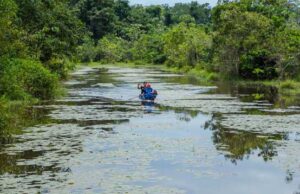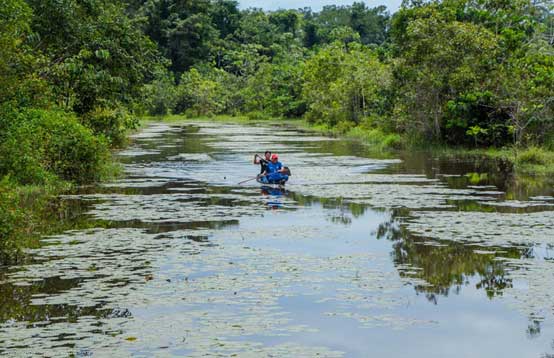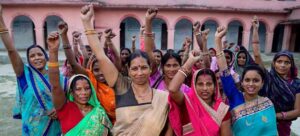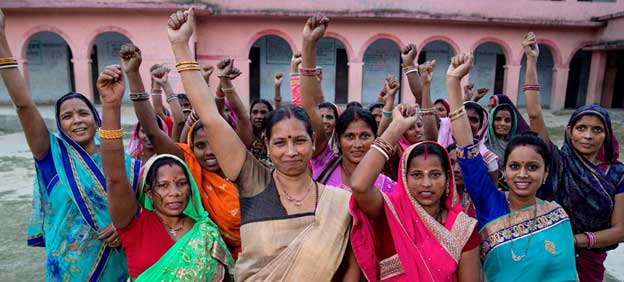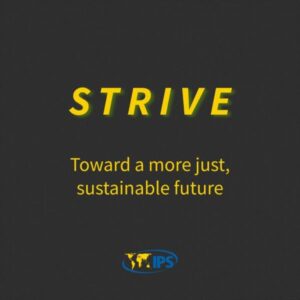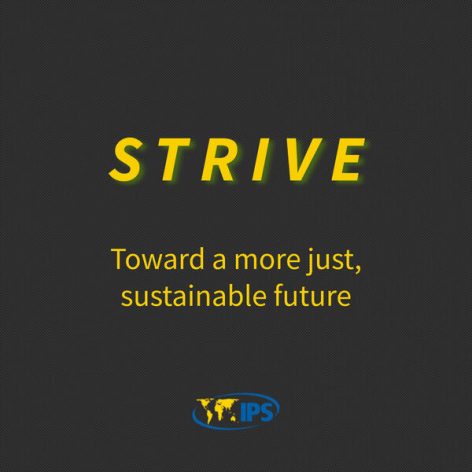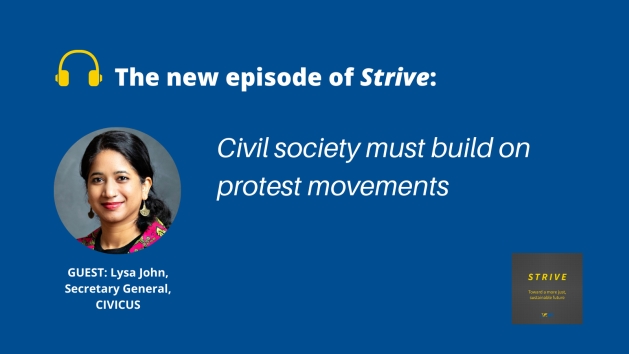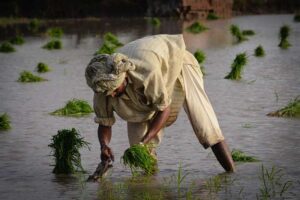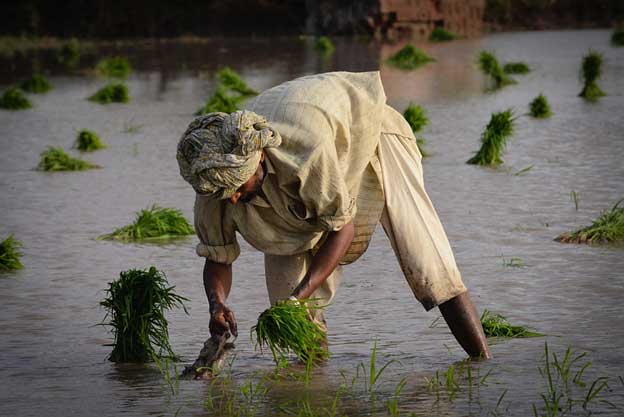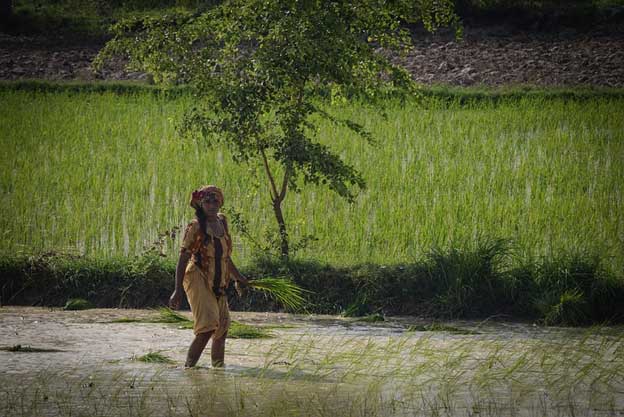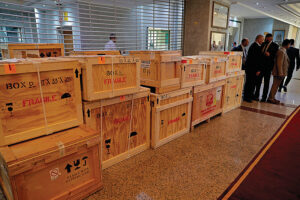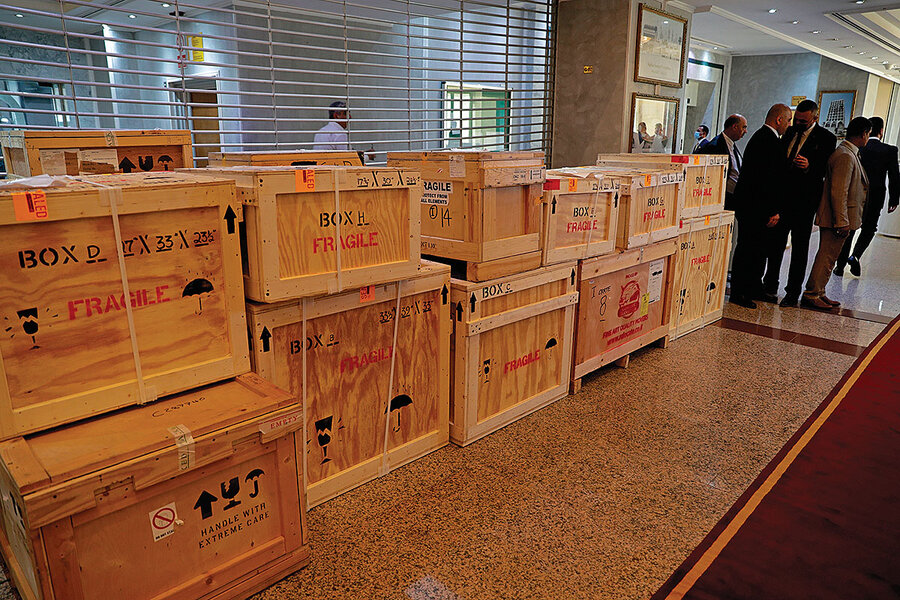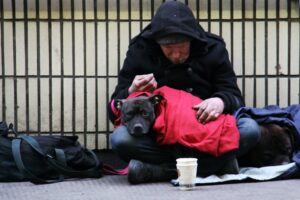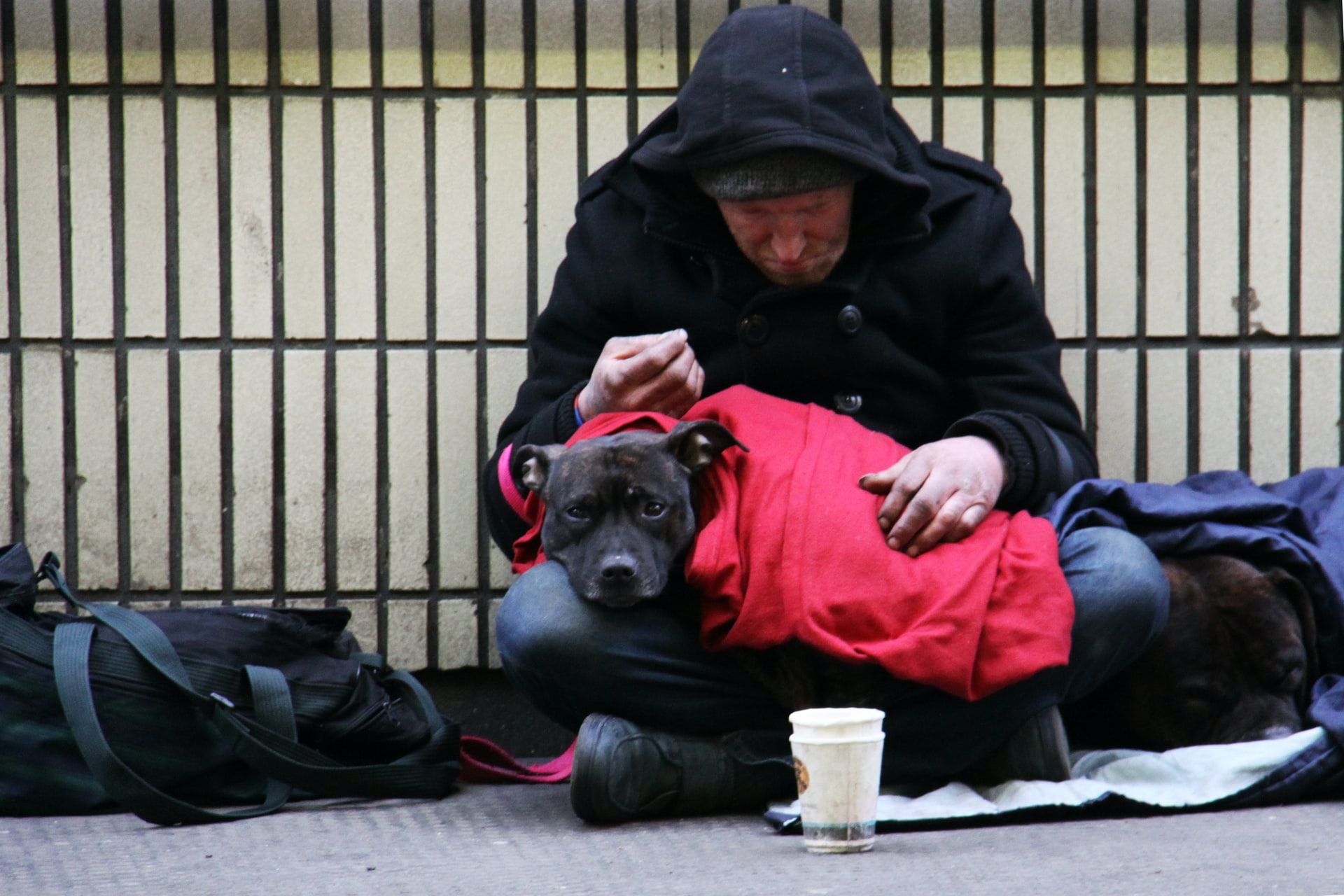In this article, we will be looking at 25 of the poorest countries in the world. You can skip our detailed breakdown of these countries by heading straight to the 5 poorest countries of the world.
The pre-pandemic world had made significant progress to reduce global poverty to almost half by the year 2000. Today however, according to United Nations projections of multidimensional poverty index, the ongoing pandemic has pushed poor nations to a new brink of income inequality and enshrouded almost 8% of the total human population in complete despair.
Poverty by definition is a depravation in income and access to resources to maintain a healthy life. According to the World Bank, poor or low-income countries are nations that have a per capita gross national income (GNI) of less than $1026.
Many of the poorer countries in the world are a cauldron of political instability with years of internal conflict leaving them vulnerable to financial insecurity. Additionally, natural disasters brought on by the global climate emergency have led to entire nations being entrapped in cycles of poverty and disease. Such fragile infrastructures cannot withstand the onslaught of adversities such as Ebola and AIDS outbreaks and nations lose, whatever productive ground they have gained, very quickly.
It is perhaps not surprising that top ten of the poorest countries exist in Africa, and that it is in both Africa and in the continent of Asia that we expect to witness the largest increase in extreme poverty as a result of the pandemic. All of these countries are deeply susceptible to environmental and economic risks and the ripples of the COVID 19 pandemic have contributed immensely to long-term persistent challenges to their economies.
All is not lost and there are many strides that have been made due to narrowing of the digital divide in these nations. Internet accessibility has helped to introduce the services of companies like Alphabet Inc. Class A (NASDAQ: GOOGL), Amazon.com, Inc. (NASDAQ: AMZN), Twitter, Inc. (NYSE: TWTR) and Uber Technologies, Inc. (NYSE: UBER) and open new windows of opportunity and information to these hitherto isolated peoples.
Our Methodology
Over the past 25 years, the World Bank has used gross national income (GNI) per capita – valued annually in US dollars – to classify countries into an economic prosperity scale. The GNI of a country is calculated by taking into account its national output within borders and also its investments from abroad.
The formula for Gross National Income (GNI) is: GNI=C +I+G+X +NFFI. Where the ‘C’ represents consumption, the ‘I’ investments, ‘G‘ is consumptions and investments made by the government, ‘X’ represents net exports and ‘NFFI’ is the net foreign factor income. This defined and preferred benchmark, over the previously used gross domestic product (GDP), has proved useful to analyze progress and development trends since the beginning of the 3rd millennium.
With this context in mind, we will now deep dive into our list of the 25 poorest countries in the world. We will start with the 25th poorest country, according to the World Bank GNI per capita rankings as well as the 2021 World Population Data Sheet.
25 Poorest Countries in the World
25. Lesotho
GNI: $2740
Population: 2.2 million
A constitutional monarchy, Lesotho is a landlocked country with a mountainous terrain almost entirely surrounded by South Africa. The mountains have been largely responsible for their protection from outside encroachment. The country is home to 2.2 million people and its GNI per capita rests at $2740. Lesotho has been prone to periodic droughts. It has also survived a military takeover which was reverted after seven years of martial rule.
24. Solomon Islands
GNI: $2680
Population: 0.7 million
An archipelagic state of 992 islands and atolls scattered around Melanesia in the Pacific Ocean, its 0.7 million residents are vulnerable to natural disasters such as tsunamis, earthquakes, and volcanic eruptions. Its GNI per capita is the $2680 and 12.7 percent of its population lives below the poverty line.
Despite these odds, 11.9% of Solomon Islanders have access to the internet and are bridging the digital divide with companies like Alphabet (NASDAQ: GOOGL), Amazon.com, Inc. (NASDAQ: AMZN), Twitter, Inc. (NYSE: TWTR) and Uber Technologies, Inc. (NYSE: UBER).
23. Guinea
GNI: $2580
Population: 13.5 million
Guinea is a majority Muslim country with ties to France. It has established trade with UAE and China. Its GNI per capita is at $2580. The 13.5 million people of Guinea have survived the Ebola virus, but the underlying fear of a new outbreak continues to permeate. Guinea continues to look to IMF to establish new programs for better infrastructure.
22. Ethiopia
GNI: $2410
Population: 117.8 million
This unique country in Africa evaded Colonial rule for all of its history, except a brief period of four years. Its war with neighboring Eritrea ended in 2018. Its population of 117.8 million makes it the second most populous country in Africa. Ethiopia has battled a 30-year drought and a population boom leaving its GNI per capita at $2410.
The country ranks 22nd in our list of the 25 poorest countries in the world.
21. Uganda
GNI: $2260
Population: 27.1 million
Uganda has one of the highest fertility rates in the world. Its population as of mid-2021 was 27.1 million people. It is perhaps tragically balanced by the AIDS epidemic, which keeps mortality rates high. Uganda’s government spending has grown as has its national debt resulting in its GNI per capita at $2260.
20. Mali
GNI: $2250
Population: 20.9 million
Mali, landlocked in western Africa, depends on its gold mining and agriculture exports as a source of wealth. Its people have seen much economic and social unrest and suffered through over 31 years of dictatorship rule. The current population of Mali is 20.9 million.
19. Gambia
GNI: $2230
Population: 2.5 million
The Gambia is one of the smallest countries on the African mainland and is home to 2.5 million people, 95 per cent of whom are Muslim. The Gambia, largely an agricultural economy, relies heavily on overseas remittances and tourism. GNI per capita is $2230. Any future economic progress will depend on substantial bilateral aid. The Gambia has not been successful in eliminating its human trafficking problem; women, girls and young boys continue to be in danger of becoming victims.
18. Togo
GNI: $2230
Population: 8.3 million
The Togolese people have lived under a 50 year rule, with one family at the helm. The political and civil unrest and frustration in the form of riots experienced by the country is mainly due to this. Togo enjoyed a period of economic stability till the political situation erupted into its current state. At the moment its GNI per capita is at $2230. Although this figure is similar to The Gambia, other factors of the Human Development Index have been taken into account to place it below that country.
However, as youth in poor countries like Togo gets access to the internet and begin to use services of companies like Alphabet Inc. Class A (NASDAQ: GOOGL), Amazon.com, Inc. (NASDAQ: AMZN), Twitter, Inc. (NYSE: TWTR) and Uber Technologies, Inc. (NYSE: UBER), many believe this would increase awareness and create new economic opportunities in the region.
17. Burkina Faso
GNI: $2190
Population: 21.5 million
Burkina Faso is a country with very limited natural resources. Its 21.5 million inhabitants have had a history littered with human and natural disasters from drought to terrorist attacks and then to internally displaced peoples from these attacks. The current GNI per capita for Burkina Faso is $2190. Like The Gambia it struggles with issues resulting from human trafficking of women and children.
16. Rwanda
GNI: $2160
Population: 13.3 million
Rwanda has had a past littered with unrest culminating in the genocide of 800,000 people in 1994 including a large proportion of its Tutsi population. Its current population stands at 13.3 million people. Tourism, tea and coffee are some of the major sources of foreign exchange. Present day government has made pathways to leading the way to progress in the communications and technology sector. Rwanda’s GNI per capita is $2160.
However, as youth in poor countries like Rwanda gets access to the internet and begin to use services of companies like Alphabet Inc. Class A (NASDAQ: GOOGL), Amazon.com, Inc. (NASDAQ: AMZN), Twitter, Inc. (NYSE: TWTR) and Uber Technologies, Inc. (NYSE: UBER), many believe this would increase awareness and create new economic opportunities in the region.
15. Afghanistan
GNI: $2110
Population: 39.8 million
Afghanistan, one of the two countries on our list that is not located in Africa, houses a population of 39.8 million people. The geopolitical situation of the country has made it helpless against interference from its neighbors. Over 72,000 Afghans have received refuge in neighboring Pakistan. It is unfortunate that Afghanistan continues to be the world’s largest producer of opium. Since the US invasion in 2001, economic activity has increased slightly and currently the GNI per capita is at $2110.
14. Guinea-Bissau
GNI: $1980
Population: 2 million
A small country of 2 million people located on the western coast of Africa, bordering the Atlantic Ocean, Guinea-Bissau is home to a diverse plethora of ethnicities. The country has experienced its fair share of political upheavals in the form of coups and civil war. All this has contributed to its fragile economy where the GNI per capita is $1980 and two out of three Bissau-Guineans remain below the poverty line.
13. Sierra Leone
GNI: $1670
Population: 8.1 million
Home to 8.1 million people, Sierra Leone is located on the Western edge of the continent of Africa. Subsistence agriculture is the main source of wealth for its people.
12. Eritrea
GNI: $1610
Population: 3.6 million
Eritrea was involved in a 30-year struggle for independence from Ethiopia till 1991. Like many African countries the Eritrean population of 3.6 million people engages in subsistence agriculture for most of its economic output with a small percentage involved in mining of gold and other minerals. Its GNI per capita is currently at $1,610.
However, as youth in poor countries like Eritrea gets access to the internet and begin to use services of companies like Alphabet Inc. Class A (NASDAQ: GOOGL), Amazon.com, Inc. (NASDAQ: AMZN), Twitter, Inc. (NYSE: TWTR) and Uber Technologies, Inc. (NYSE: UBER), many believe this would increase awareness and create new economic opportunities in the region.
11. Chad
GNI: $1580
Population: 17.4 million
After Chad’s independence in 1960, the Chadian people saw over three decades of oppression and invasion from its neighbors. The country is home to 17.4 million, over 400,000 of whom are from Nigeria and Sudan. Chad mediates to resolve the Darfur conflict. Its GNI per capita is $1580 as low oil prices stress Chad’s fiscal position. Its 1 million internet users have been introduced to the services of companies like Alphabet Inc. Class A (NASDAQ: GOOGL), Amazon.com, Inc. (NASDAQ: AMZN), Twitter, Inc. (NYSE: TWTR) and Uber Technologies, Inc. (NYSE: UBER) opening avenues of free flow of information and technology.
10. Malawi
GNI: $1540
Population: 20.3 million
A country of 20.3 million people, Malawi is located in southern Africa. It is ranked among the world’s least developed countries with a GNI per capita of US $1540. The country is heavily dependent on IMF, World Bank and other donor nations for assistance. A large share of its economic down trend can be attributed to the El Nino triggered drought of 2015.
9. Madagascar
GNI: $1540
Population: 28.4 million
Once a pirate stronghold in the early 18th century, Madagascar with its mostly youthful population of 28.4 million people is a small island in the Indian Ocean. It has suffered its fair share of cyclones and locusts infestations over its history. The dependent population contributes to its low GNI per capita of $1540. It is perhaps not surprising that 9.8% of the internet users in Madagascar’s dependent population use the services of (NASDAQ: GOOGL), Amazon.com, Inc. (NASDAQ: AMZN), Twitter, Inc. (NYSE: TWTR) and Uber Technologies, Inc. (NYSE: UBER).
8. Liberia
GNI: $1250
Population: 5.18 million
Liberia is a country on the western coast of Africa. Its name is derived from the Latin ‘liber’ meaning free and is home to 28 diverse ethnicities of 5.18 million people. The basis of its foundation was a home for liberated African American slaves. An Ebola outbreak in 2015 and over a decade of fighting have reduced its GNI per capita to $1250. Ivorian refugees in Liberia make up 95% of the refugee population.
7. Mozambique
GNI: $1250
Population: 32 million
Mozambique, on the eastern coast of South Africa, remained under the Portuguese till 1975. Its 32 million inhabitants have struggled with a severe drought and large scale emigration due to civil war for the better part of a century. The GNI per capita of Mozambique stands at $1250 as of 2020. Mozambique like most poor African countries is highly vulnerable to lower life expectancy due to AIDS.
6. Niger
GNI: $1210
Population: 25.1 million
Named after the Niger River, this landlocked African country is home to 25.1 million people. Niger’s geopolitical position and the rate of unrest and spillover effect from surrounding countries have contributed to its low GNI per capita at $1210. Niger lacks the funds to develop its mineral and oil resources and is ranked last in the UN Development Programme’s Human Development Index.
However, as youth in poor countries like Nigeria gets access to the internet and begin to use services of companies like Alphabet Inc. Class A (NASDAQ: GOOGL), Amazon.com, Inc. (NASDAQ: AMZN), Twitter, Inc. (NYSE: TWTR) and Uber Technologies, Inc. (NYSE: UBER), many believe this would increase awareness and create new economic opportunities in the region.
Click to continue reading and see the 5 Poorest Countries in the World.
Suggested articles:
Disclosure: None. 25 Poorest Countries in the World is originally published on Insider Monkey.
